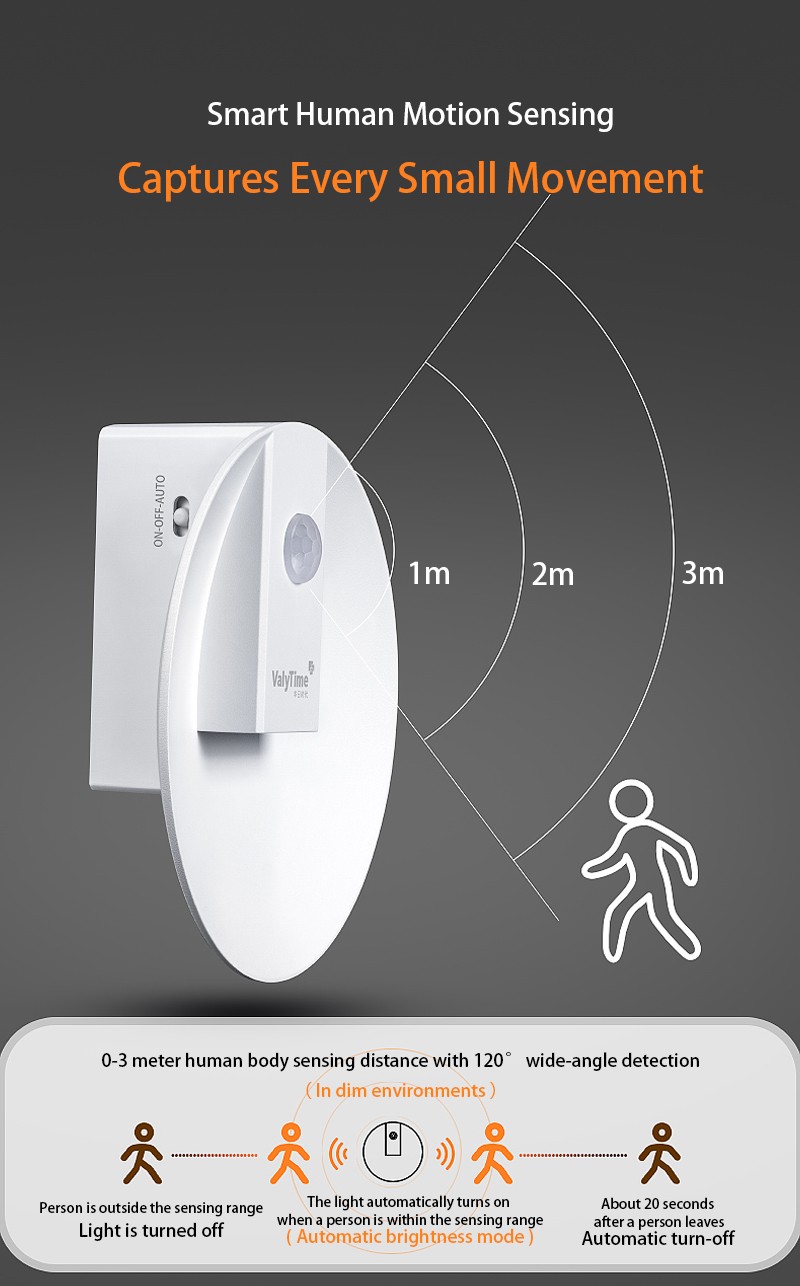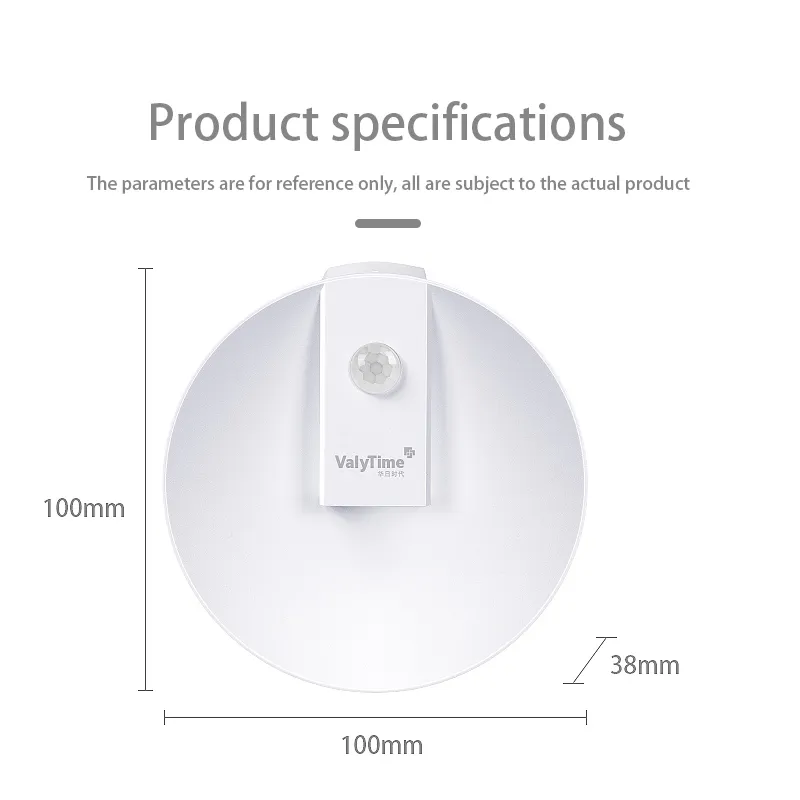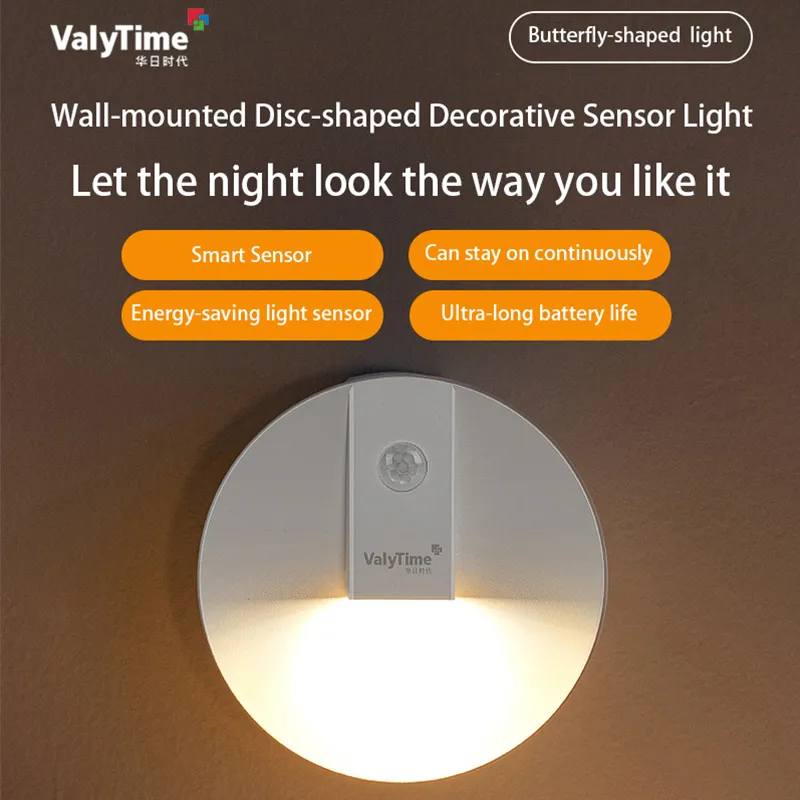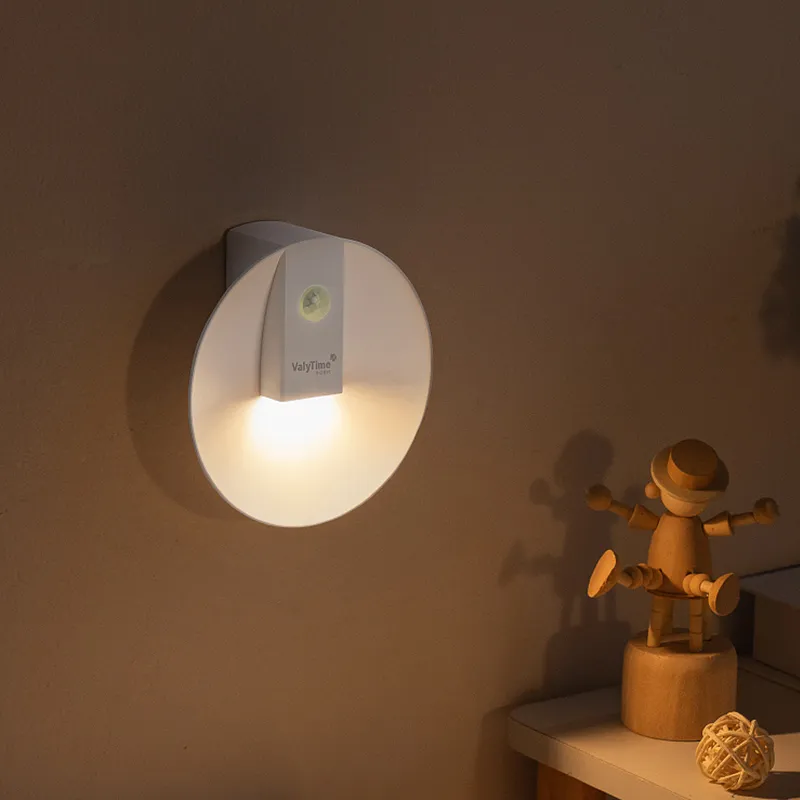Why do motion activated LED lights have problems?
Motion-activated LED lights automatically turn on and off by sensing motion, providing a convenient lighting experience and reducing unnecessary energy waste. However, in practice, many people experience malfunctions or malfunctions with motion-activated LED lights, such as the light not turning on, the light turning on and off too frequently, and unstable lighting. These issues not only affect the user experience but can also lead to additional repair and replacement costs.
Motion-activated LED lights operate based on sensor technology, detecting motion in the environment and turning the light on and off accordingly. While this design improves the intelligence and convenience of the lights, it also increases the complexity of the device, potentially leading to various technical issues.
So, why do motion-activated LED lights have problems? What are the specific causes? This article will explore possible causes and solutions to help consumers better understand and address these issues.

How do motion-activated LED lights work?
Motion-activated LED lights rely on motion sensors to detect changes in the surrounding environment. Common motion sensors include infrared sensors, microwave sensors, and ultrasonic sensors. Different types of sensors use different technologies to detect motion and trigger the light to turn on and off.
• Infrared sensors: Detect motion by sensing infrared radiation from people or objects. When the body temperature of a person or object differs from the surrounding temperature, the infrared sensor detects this difference and activates the light.
• Microwave sensors: Detect motion by reflecting microwave signals. When microwaves emitted by the sensor encounter a moving object, their frequency changes, and the sensor uses this change to determine if the object is moving.
• Ultrasonic sensors: Detect motion by emitting high-frequency sound waves and detecting the reflected sound waves. Because the speed of sound waves is affected by the distance from the object, the sensor can use this property to detect movement.
These sensors send signals to control the LED light based on environmental changes. This allows the light to automatically respond to environmental changes without human intervention, providing more convenient lighting services.

Motion-activated LED lights: Common problems?
While motion-activated LED lights offer many advantages, they can also experience malfunctions or abnormalities in practice. Here are some common problems and their possible causes:
1. The light doesn't turn on
This is one of the most common problems with motion-activated LED lights. When a light fails to respond to a sensor signal, it may remain off. This issue can occur for a variety of reasons:
• Sensor malfunction: If the motion sensor itself is malfunctioning, the light will not automatically turn on and off in response to surrounding motion. This could be due to damage to the sensor's circuitry or obstruction of the sensor's sensing range, preventing it from detecting motion.
• Low battery: For some battery-powered LED lights, a low battery can cause the light to malfunction. Especially if there's no battery charging prompt, users may overlook the battery level issue, causing the light to not turn on.
• Power supply issues: If there's a problem with the LED light's power supply, such as unstable voltage or a loose power connection, the light may not turn on.
2. Unstable or Flickering Lights
Flickering or erratic lighting is another common problem, especially when the light switches on and off frequently. This issue can occur for the following reasons:
• Sensor False Triggering: The sensor may misinterpret small objects or changes in the surrounding environment as motion signals, causing the light to turn on and off frequently. This phenomenon often occurs when the sensor is overly sensitive or when there are numerous interference sources in the environment.
• Excessive interference: Environmental factors such as electronic devices, wireless signals, and strong light sources can affect the operation of motion sensors. When the sensor detects these interference signals, it may cause the light to frequently turn on and off.
• Improper sensor adjustment: Many motion-activated LED lights allow users to adjust the sensor's sensitivity and operating time. If improperly adjusted, the sensor may react to small environmental changes, resulting in unstable lighting.
3. Lights do not automatically turn off as expected
Sometimes, motion-activated LED lights do not automatically turn off after the scheduled time, wasting energy. Possible causes include:
• Improper sensor settings: Some LED light motion sensors have a time delay feature that delays turning off the light after detecting no motion. If the time delay is set too long, the light may not turn off in time.
• Improper sensor sensing: If the sensor does not accurately detect changes in the environment, the light may remain on. For example, if the light is improperly installed, the sensor may not cover the entire area, resulting in motion not being detected in certain areas and the light not turning off.
4. The light is too sensitive or too insensitive
Sometimes, the sensor in a motion-activated LED light is too sensitive or too slow to respond, resulting in a poor user experience. This can be caused by:
• Improper sensor placement: If the sensor is improperly positioned, it may be overly sensitive to certain environmental changes or inaccurately respond to surrounding motion changes. For example, the sensor may be too close to a wall or other obstruction, limiting its sensing range.
• Improper sensor settings: Many motion sensor lights allow the user to adjust the sensor's sensitivity. Improper settings can cause the light to activate frequently or fail to detect large changes in motion.

How to troubleshoot motion-activated LED light problems?
Now that we understand the possible causes of motion-activated LED light problems, we can discuss some common solutions to help users troubleshoot and fix them, ensuring proper operation of the light.
1. Check the power supply and batteries
For battery-powered LED lights, first ensure the batteries are fully charged. If the batteries are low, the light may not activate. For plug-in lights, check the power outlet and electrical connections to ensure they are functioning properly.
2. Adjust the Sensor Position and Angle
The sensor's mounting position is crucial to its effectiveness. Ensure the sensor is mounted at the appropriate height and angle to cover the entire working area. Generally, the sensor should be mounted above the path of people and avoid obstacles blocking its sensing range.
3. Adjust the Sensor Sensitivity and Delay Settings
If the light is turning on and off too frequently or erratically, try adjusting the sensor's sensitivity and delay settings. Most motion-activated LED lights have these adjustments, allowing you to adjust them to your needs. Lowering the sensitivity or shortening the delay can help prevent frequent on-and-off switching.
4. Avoid Interference Sources
Minimize factors that may interfere with sensor operation, such as avoiding placing the sensor near strong light sources and away from electronic devices or wireless signal sources. If the environment is subject to a high level of interference, you may need to consider a more suitable sensor type or mounting location.
5. Clean the Sensor and Light Regularly
Dust and dirt on the sensor surface can affect its sensing performance, so regular cleaning of the sensor and light is essential. Exercise care when cleaning to avoid damaging the sensor components.

What kind of sales support does Huari provide?
We don’t just manufacture LED products—we also help our partners grow sales. Huari offers detailed product catalogs, competitive promotional prices, and quick quotations for wholesale buyers. Our sales team works closely with clients to ensure smooth purchasing, timely delivery, and strong after-sales service. Whether you buy LED night lamps, vanity wall lights, or panel lamps, you benefit from factory-direct discounts.
